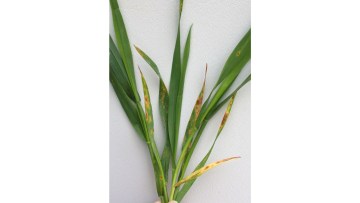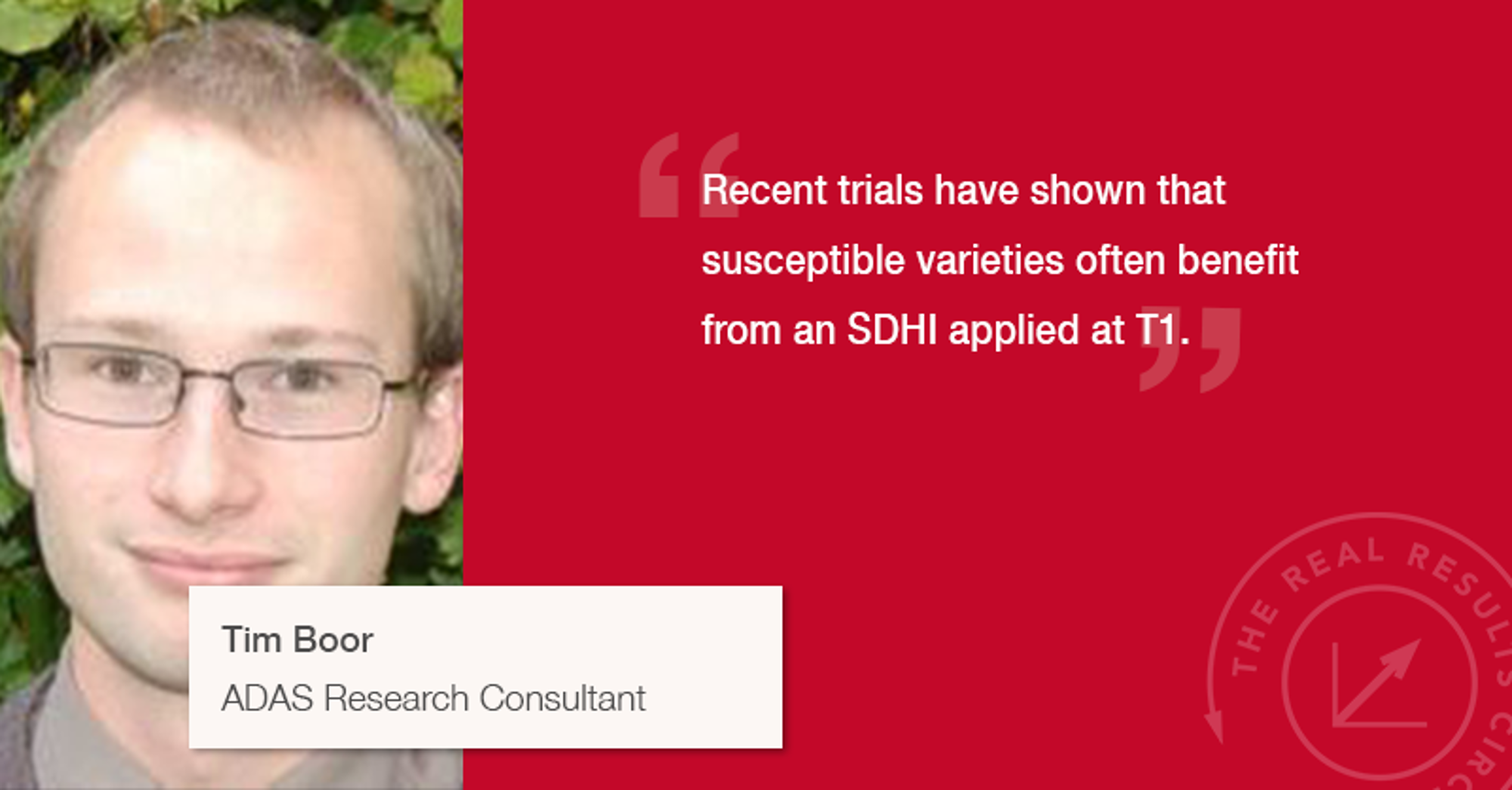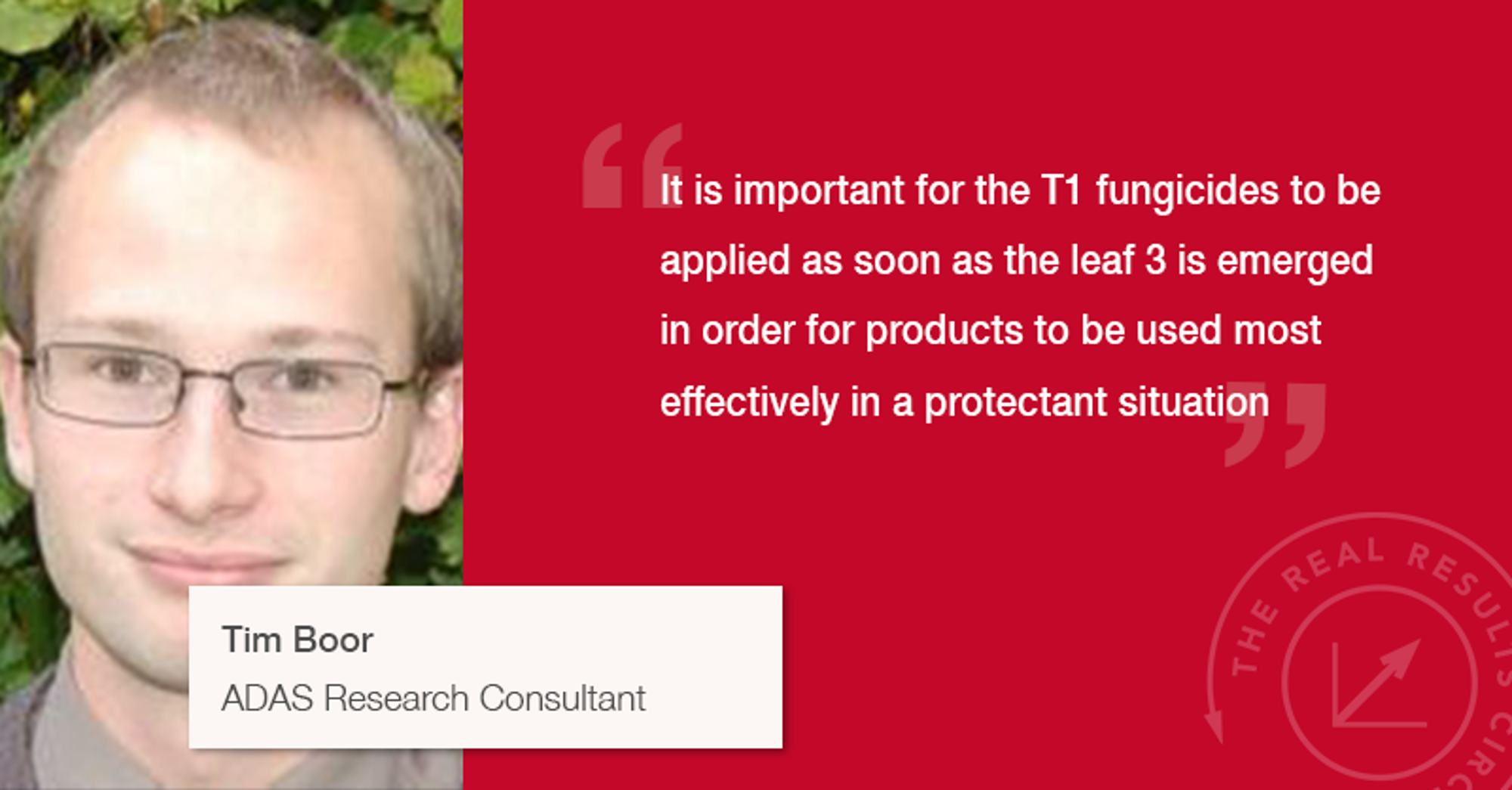T1 timing: Key to reducing the risk of disease spreading
01.05.2018

With a recent history of frequent heavy rain showers, the risk of Septoria triticii spreading to the upper leaves is higher than we might expect in an average season.
Typically, the latent period ranges from 10-30 days, so leaves which currently appear clean could still be infected with septoria.
Septoria spores are produced under conditions of leaf wetness and high humidity. In early spring it is common to see the disease present on the lower leaves of crops at which stage control is rarely economical.
However, as crops are at or approaching the time of T1 applications (leaf 3 emerged), attention is focused on the risk of disease spread to the yield-forming leaves.
The dispersal of septoria mainly occurs during heavy rain, when droplets splash spores from the lesions on the lower leaves to the upper leaf layers.
The aim of fungicide treatments is to create a healthy barrier within the crop canopy between septoria at the bottom of the crop and the yield-forming leaves at the top of canopy.
Most T1 strategies are likely to include an effective triazole in combination with a multisite.
The difficult decision growers and advisers have to make is the inclusion of an SDHI-containing product to increase the strength of disease control at this timing, balancing the additional cost and increased selection for SDHI-insensitive septoria populations against the need to ensure effective disease control this season.

Whilst no current varieties grown are completely resistant to the disease, several are rated as high as 7 out of 9 for resistance to septoria on the AHDB Recommended List, and are capable of providing useful levels of disease control.
Recent trials have shown that susceptible varieties often benefit from a SDHI applied at T1, whereas with resistant varieties the requirement for a SDHI application at T1 is often not necessary.
The crop sowing date can also have an impact on disease pressure. Ongoing research (ADAS led with NIAB, SRUC, Teagasc, AHDB and BASF partners) suggests the septoria risk is reduced significantly when wheats are sown one month later (e.g. mid October compared to mid September).
Growers also need to consider previous applications and the local weather conditions; it is important for the T1 fungicides to be applied as soon as the leaf 3 is emerged in order for products to be used most effectively in a protectant situation.

If fungicides are likely to be delayed beyond this optimal timing, some more curative (SDHI) activity be needed – especially if a T0 application was missed.
Looking ahead towards the T2 timing at flag leaf emerged, this is the most important timing for yield formation.
Where disease pressure is high, there is a clear case for using the most effective chemistry available. The SDHIs in combination with leading triazoles should provide this control.
The use of multisite actives at this time is also likely to improve disease control and yield, and will insure a level of control is maintained in the event of resistance development.

